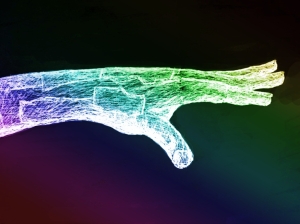Does this really lead to more productivity ?
 It depends… There is not true answer and time will tell. Based on various studies the productivity is real existing, but was consumed by the more complex integration of the digital world. Have the early digital assistants like electronic mail, the Internet and electronic calendar, u.o. led to more productivity of individuals. The recent adding of more and more decisions on „not experts“ led to less productivity at all. Was in the late 90’s an admin which organized many parts of the business, now more and more high paid employees are doing this by themselves. Of course there are a lot of supporting tools. However it is obvious that experts are much better handling the right processes, individuals can du this when more seldom are they do that.
It depends… There is not true answer and time will tell. Based on various studies the productivity is real existing, but was consumed by the more complex integration of the digital world. Have the early digital assistants like electronic mail, the Internet and electronic calendar, u.o. led to more productivity of individuals. The recent adding of more and more decisions on „not experts“ led to less productivity at all. Was in the late 90’s an admin which organized many parts of the business, now more and more high paid employees are doing this by themselves. Of course there are a lot of supporting tools. However it is obvious that experts are much better handling the right processes, individuals can du this when more seldom are they do that.
Companies add more software to improve, means optimize the cost further, to support this evolution, but end of the day the often individuals take more time to get the process done with they think have the best benefit from. This leads in less productivity. Maybe not for the company, since a lot of this are taken by extra hours, prior the digital revolution, it was called privat time. Always on and Always available means less productive for the individual.
How about the society ?
Evolution requires education, revolution requires new thinking and more education as well as new processes and procedures. With the current pace IT and the other business change the models many peo- ple could not keep up, so they where often lost and productivity is going down. Does it matter. Yes ! We have to start to justify the productivity no more on one or a group of individuals, more on the impact in economics. Only this way we can inno- vate further.
Evolution or revolution ?
If enough people adopt to a total new change, we speak from a revolution. Evolu- tion happens every day and is a constant we see since the the early days of mankind. My opinion is that a revolution in society can be good if this is than taken with the majority of people and nobody is left behind by purpose. This is a tricky process. However in the past the revolution and evolution where centered around man kind. In the younger history more and more voices you will hear that talk about a revolution in robotics and artificial intelligence. This will lead that mankind will no longer sit in the driver seat, maybe some minor believe that they can control that revolution.
Do we than need still humanity
The question more would follow the „Why“. Algorithm can do things without „error“, robots can work day and night. This will lead for the ultimative questions, for whom? If more and more humans are replaced by smart machines or algorithms, what will than happen with humanity? There is a simple answer from the history they will not survive, maybe some in the first iteration, but end state is with out mankind.
Productivity around humans
Taken this thought, it will take you to the ultima ratio that we have to focus on the man and woman, child and parents, old and young as the center and pole to drive productivity gains. All efforts have to bing the productivity to increase the personal life of people not replace them in the first place. To make this quite right, there will be some duties, work or other stuff which will benefit from removing humans out of the center. the goal seams to me to upskill the starting with the children for a better productivity paired with the skills mankind has to offer as complement.
See also



















































